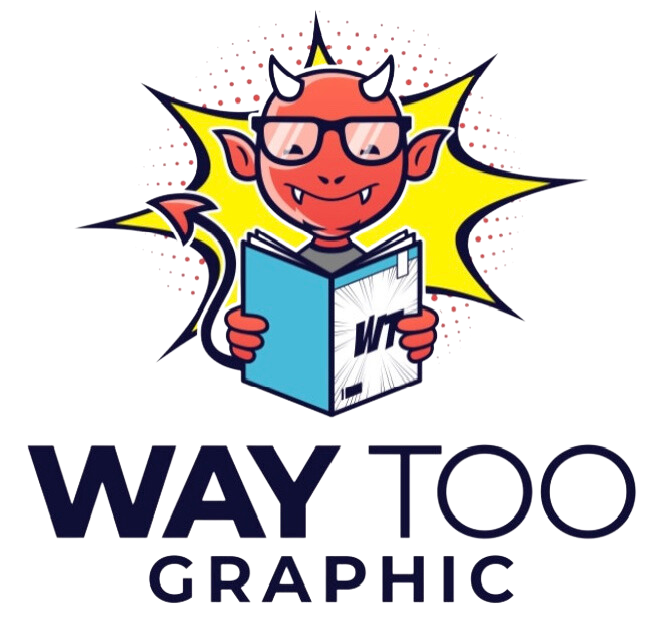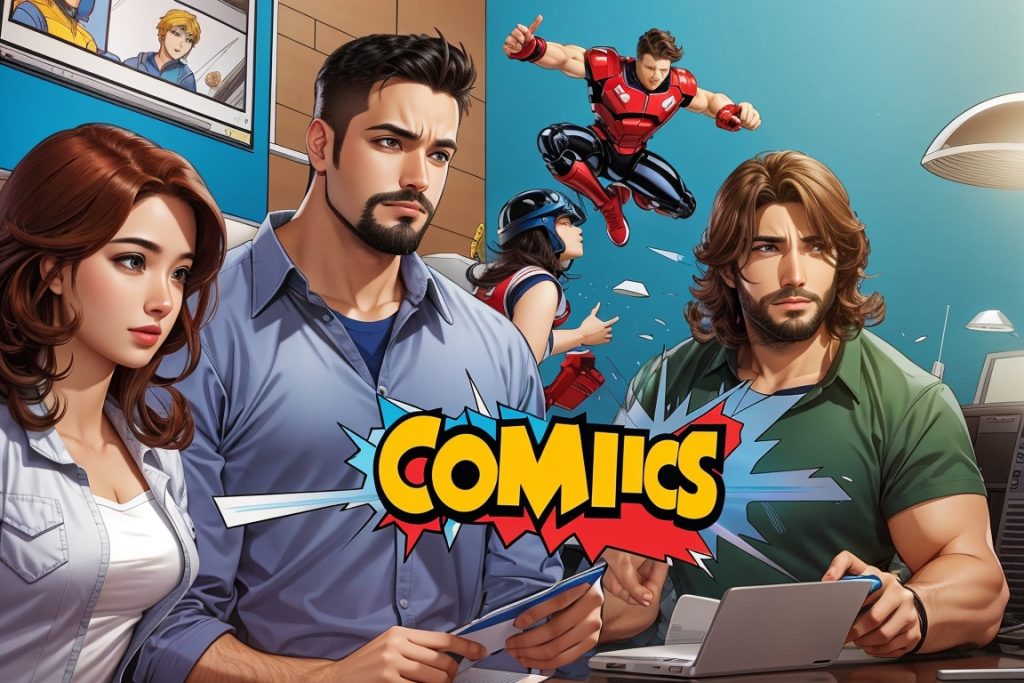Warhammer can be an overwhelming hobby. If you’re just starting out, we understand how daunting the road ahead may seem.
No guide seems to be able to truly teach you all the dynamics of the game. Even if you know where to start, things can quickly come to a halt. Many times, it may require a Google search before you’re able to continue. So if you’re looking to learn more about Warhammer 40,000 models, this guide will serve you well!
We’ve tried incorporating all the ifs and buts of buying a Warhammer model in this guide at the end. Before we get into the intricacies, let’s dig into the best Warhammer models for those looking for quick, valuable suggestions.
Of course, this list is a subjective one, but if you don’t know where to begin or what to choose, the Warhammer models we’ve narrowed down will definitely help you out.
5 Best Warhammer Models Reviewed
1. Warhammer 40,000 Black Templars: Castellan Miniature

The model drives inspiration from the iconic artwork by John Blanche. The Castellan serves as the exemplary right hand of the Marshal and directs battle-brothers during war.
It comes enveloped in skull effigies and is armed with a potent combi-flamer and master-crafted power axe. This model gives hands down the best vintage allure while adding significant firepower to your Black Templars force.
Pros
- Unique, detailed sculpt capturing the essence of Black Templars artwork.
- Offers multiple weapon choices that allow for customization for the character.
- Acts as a vital lieutenant variant, enhancing tactical logistics in gameplay.
- A distinctive way to add a retro touch to the Black Templars army.
Cons
- Specifically designed for Black Templars, limiting use for diverse armies.
- Size dimensions might be slightly large for some game setups.
2. Warhammer 40k – Space Marine Venerable Dreadnought

It’s a space marine hero preserved from grave injuries. Venerable Dreadnoughts serve dual purposes – as wise counselors during peace and as seasoned warriors during wartime.
This particular box set offers an intricate, multi-part plastic model boasting a vast range of weaponry and customization options. This model comes with 84 pieces, including:
- Various weaponry
- Leg guards
- Helmets
- Purity seals
- Pennants
- Sarcophagus designs
- Numerous Imperial icons
- An abundance of swappable parts to tailor the model to a specific chapter.
Pros
- Highly detailed and versatile model — allows for various customization options and diverse weaponry.
- Represents both the martial might and wisdom of the Space Marine chapters.
- Includes unique elements like multiple sarcophagus designs and Imperial icons.
- Easily convertible to fit the preferred chapter, enhancing its adaptability.
Cons
- The multi-part assembly might be challenging for beginners.
- Plastic material may require care in handling and storage to prevent damage.
3. Games Workshop Warhammer 40,000 Space Marines Bladeguard Veterans Box Set

This 78-part plastic kit is a gateway to crafting three intricately designed Bladeguard Veterans, each standing proudly on 40mm Citadel round bases.
While the kit comes unpainted, it provides an Ultramarines Infantry transfer sheet which is basically added authenticity. It’s also hailed by long-time collectors as one of the most visually appealing Space Marine models of the era!
That said, you should get it if you’re looking for a collection. The versatility and surplus parts for kitbashing amplify its allure for this purpose.
Pros
- High-quality, detailed molds so they’re aesthetically pleasing.
- Versatility in poses will allow for unique customizations.
- The additional parts facilitate kitbashing and diversifying collection.
- Includes the Ultramarine Infantry Transfer Sheet.
Cons
- Plastic material may require careful handling to prevent wear or breakage.
- The specific theme may not align with all collectors’ existing armies.
4. McFarlane – Warhammer 40,000 7 Figures Wave 5 – Chaos Space Marine (Artist Proof)

Better yet, the figure features up to 22 moving parts, allowing for a myriad of dynamic poses. On top of that, the classic matte gray finish and the ability to customize just as the player likes is a bonus! Packaged in a Warhammer 40K-themed window box, it’s more than a mere toy; it’s a collector’s dream!
Pros
- Ultra articulation that features up to 22 moving parts for diversified posing.
- High-quality material with a robust and weighty feel.
- Comes in a thematic Warhammer 40K window box.
- Customizable/paintable for hobbyists.
Cons
- Plastic material, though of high quality, might still be susceptible to damage if mishandled.
- Aimed at collectors, might not be suitable for younger children.
5. McFarlane – Warhammer 40,000 7 Figures Wave 5 – Dark Angels Intercessor (Artist Proof)

The scaled figure is intricately detailed. Articulation is spot on too! You’re looking at 22 moving parts that offer an expansive range of dynamic posing options.
Complementing the figure’s aesthetic appeal is its classic matte gray finish. So, this one is paintable and customizable, down to the little details.
Pros
- Features up to 22 moving parts for broad posing potential.
- Comes with a Bolt Rifle and Backpack.
- The matte gray finish allows for customization and painting.
- Packaged in Warhammer 40K window box — valuable for collectors.
Cons
- Requires painting to reach its full visual potential.
- Not suitable for children under the age of 12.
Buyer’s Guide to Help Beginners Choose Warhammer Models
If you’re new, you need to know your reasons for buying a Warhammer model. Don’t just throw money out there just because you’d like having it on your countertop.
There’s much more to consider. It’s an expensive hobby and if you want value out of it, you’re going to have to give time to it.
What Should You Consider When Buying a Warhammer Model?
To start, ask yourself questions about the following factors to secure a good Warhammer model for yourself.
1. Material
First, the material used is crucial. It dictates a model’s durability, weight, and feel. While most Warhammer figures are made of high-quality plastic, there are also resin or metal variants.
Plastic models are more forgiving for beginners, while resin offers sharper details but might require more care during assembly. This is nothing to be too considerate of because you’ll have no control or ability to test out the materials, but just something to be mindful of.
2. Seller/Authenticity
Counterfeit models lurk in the market. Always make sure you’re purchasing from a reputable retailer or a trusted source. Genuine Games Workshop products guarantee compatibility, superior detail, and overall quality.
We’ve listed two products by Games Workshop above. If they help float your boat, buy them! Otherwise, look for the next best possible options by collaborators.
3. Gameplay Benefit
If you’re a player, not just a collector, consider the strategic benefits of the model in the game. Some units might offer tactical advantages.
This will help complement your army’s existing capabilities or introduce new strategies. However, you will need more than basic knowledge of the game to be able to make decisions based on gameplay.
4. Size
Warhammer models vary in size, from massive titans to small infantry units. So make sure your purchase fits the intended scale. If you have space constraints or specific gameplay goals, consider them too!
5. Articulation
For models with articulation, like the McFarlane figures, check the number of movable parts. Articulated figures allow dynamic posing, adding depth to dioramas and displays. Plus, when people want articulation, they also like being able to paint/customize the figure. The McFarlane models are perfect in this case!
6. Level of Detail
Higher-detail models are a treat to paint and showcase but can be challenging for novices. Assess the intricacy based on your painting skills and the look you aim to achieve.
If you’re buying for kids, it’s best to consider their interests. Giving children something to paint and understanding the complexities of the game will greatly help develop their motor, cognitive, and tactical skills.
7. Customizability
Some models, particularly those in matte gray, are crafted for customization. If personalization is your goal, opt for models that support interchangeable components or encourage creative painting. As we mentioned previously — go for the McFarlane variants, if that’s your preference.
8. Display and Storage Conditions
Consider where and how you’ll display or store the model. Larger models might require dedicated shelves. Smaller ones could fit in modular storage.
Make sure the environment is free from humidity and excessive sunlight to maintain the model’s pristine condition. Otherwise, you might have to deal with a ruined paint job, and that’s not pretty.
Should You Only Buy Named Characters in Warhammer 40,000?
In Warhammer 40,000, whether you should buy named characters for your army depends on your playstyle and preferences. Named characters often have unique abilities, narratives, and rules that can add depth to your army and enhance your gameplay. In other words, your named character will have a specified play and value.
Think of them like the main lineup of MCU’s Avengers — but that doesn’t mean you can discard the rest of the superheroes in MCU that majorly helped win The Infinity War.
However, it’s not mandatory to include them in your army. Many players choose not to. Named characters are highly essential in plays where storytelling and immersion are essential.
How Do I Know If a Model is a Named Character?
To determine if a model is a “named character” in the context of Warhammer 40k, consider the following criteria, as often discussed by the Warhammer 40k community:
1. Special Names
Named characters typically have unique and special names associated with the Warhammer 40k. These names are distinct from regular unit names.
For instance, the Black Templars Castellan that we’ve listed above is not a unique character name. It’s a rank name that has specific lieutenant-like rights within the Black Templar.
Merek Grimaldus, on the other hand, is a named character that holds the rank of Reclusiarch; a high-ranking religious and spiritual leader.
2. Special Rules
Named characters come with specific rules and abilities that are unique to them. You can look for these special rules in the model’s datasheet or rulebook entry.
3. Backstory
Named characters often have rich backstories and histories within the Warhammer 40k universe. Check if the model has a detailed narrative background.
4. Iconic Gear
They may be equipped with iconic and signature weapons or equipment that set them apart from regular units.
5. Unique Abilities
Named characters may have unique and powerful abilities that regular models don’t have. These abilities can significantly impact the game.
6. Warlord Traits
Named characters are sometimes described as Warlords, which grants them special Warlord Traits. This could be another indicator.
7. Points Value
In some cases, named characters may have a higher point value than standard units of the same type, reflecting their enhanced capabilities. To confirm if a model is a named character, consult the official Warhammer 40k rulebooks, codexes, or community resources.
How to Build an Army in Warhammer?
Creating an army in Warhammer involves several steps. The process can vary depending on the edition of the game you’re playing. Here’s a general guide to help you get started if you’re new:
Choose a Faction
In Warhammer 40,000, there are numerous factions to choose from, each with its own unique units, abilities, and lore. You can select a faction that aligns with your playstyle and aesthetic preferences. You can find a list of factions in various Warhammer editions on the official Warhammer Community website.
Army Building Rules
Familiarize yourself with the army-building rules for the specific edition you’re playing in. These rules dictate how many points you can spend on units, the minimum and maximum unit sizes, and any restrictions on special units or characters.
Create an Army List
Use the rules and points values provided in the rulebooks or online resources to create an army list. This list should include the units you want to field, their equipment, and any upgrades. Many players use army list-building apps or software to streamline this process.
Assemble and Paint
After determining your army list, start assembling and painting your miniatures. Warhammer is known for its beautifully painted armies, and this step allows you to customize your units to match your vision. To get a headstart on a limited budget, try to buy a kit like the Space Marines Veterans box set from Games Workshop that we’ve reviewed above.
Frequently Asked Questions
What is the Best Warhammer Model for Beginners?
The best Warhammer model for beginners is subjective because everyone would have different opinions. However, everybody can agree that Space Marines are one of the most popular armies in Warhammer 40k, and that makes them a great choice for beginners.
Other starter sets like the one we’ve listed above will also serve well for any beginner. If your goal is to start practicing as a hobbyist and you’d like to explore customizability options, try going for any of the McFarlane models.
What Age Group is Warhammer Suitable for?
Generally speaking, Warhammer is suitable for all age groups. For young children, Warhammer can benefit greatly and has huge benefits for cognitive and analytical reasoning.
Subjectively, the suitability of Warhammer for different age groups can vary depending on individual maturity and parental discretion. The Warhammer franchise offers various games and products, each with its own content and complexity.
Is there a God in Warhammer 40,000?
In the Warhammer 40,000 universe, there isn’t a single omnipotent god who created all things. Instead, the setting is characterized by a pantheon of powerful entities and beings, often called Chaos Gods, who wield immense influence.
These Chaos Gods represent various aspects of the warp, a parallel dimension where psychic energy and emotions take form. Previously, the God Emperor of Mankind has been a central figure and is still considered by many.
What Religion is in Warhammer?
In the Warhammer universe, there are several religious and spiritual elements. The most prominent religion is the Imperial Cult, which revolves around the veneration of the Emperor of Mankind.
The Emperor is seen as a god-like figure and the ruler of the Imperium of Man in the grim, far-future setting of Warhammer 40,000. The Ecclesiarchy is the organization responsible for administering the Imperial Cult and spreading its beliefs within the Imperium.
What are Warhammer Models Called?
Warhammer models are normally called miniature figures, just miniatures, or more shortly as minis.
Final Thoughts
By now, you should be able to buy yourself the best Warhammer models. Our buyer’s guide will help you with everything — from understanding named characters to developing armies. On top of that, if you want a headstart with some good models on your terrain, you can just choose one or two of the models we’ve listed above.






